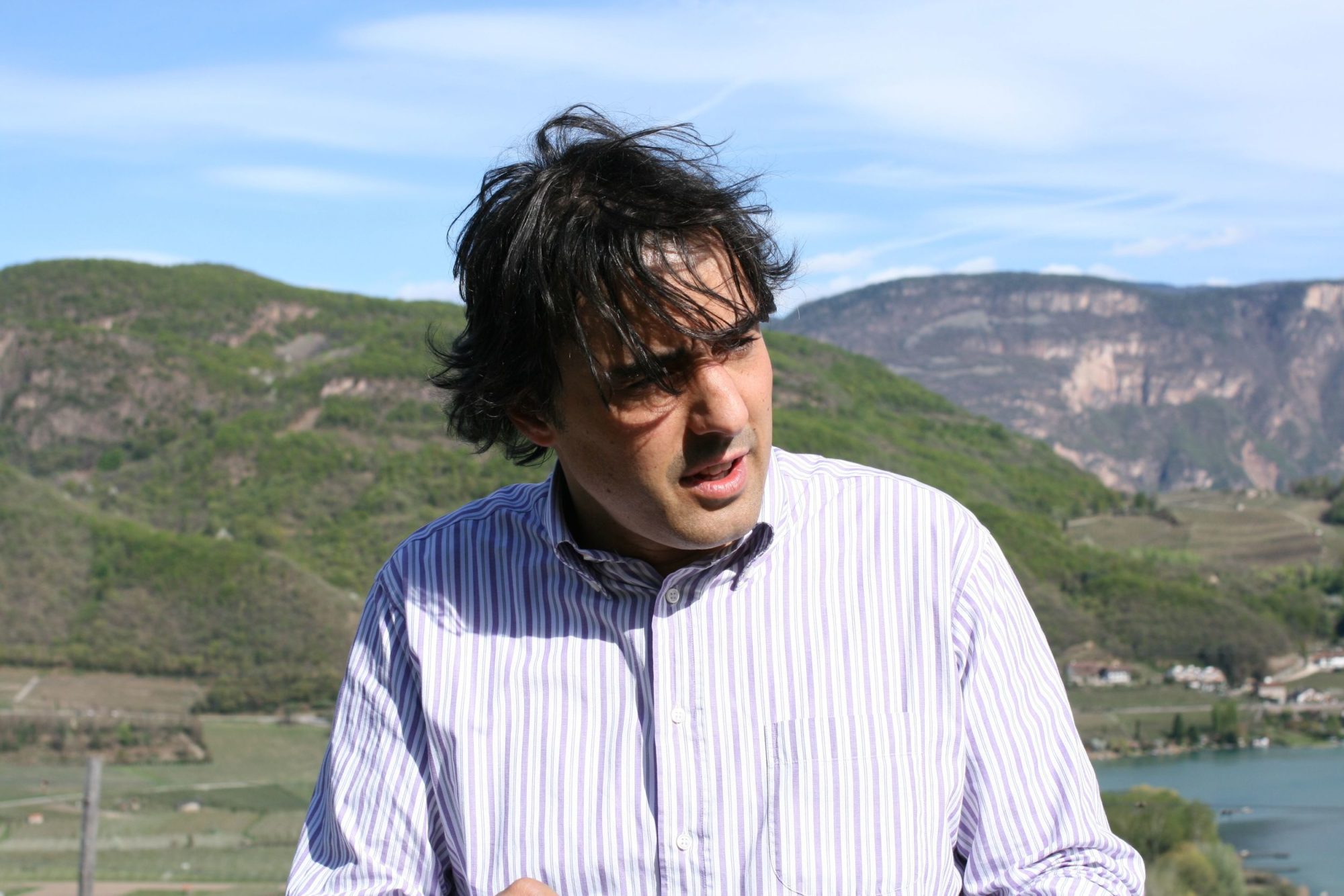Erste + Neue
Alto Adige / Italy

Their Story
“We guide the grape on its journey from the vine into the bottle, that has been our Credo since 1900. Tradition has inhabited the vaulted cellars of our winery since 1900 and our name Erste + Neue (first + new) obliges us to preserve what is valuable from the past while remaining open towards the new. Our wine embodies our history. Our history is our wine and our passion. Where the Mediterranean south joins the mountains of the Alps, where the sun drenches our soils with warmth and the vines reach out to the sky with their arms, there the vines capture the landscape and transmute it into dreams…”Erste+Neue Winery
The Alto Adige (or Süd Tyrol, as it’s called by the German-speaking inhabitants) is the only area of Italy known for good large, co-operative wineries. (A few good co-ops exist in other regions, but not lots of them in one region.) We are now importing the top-notch wines of a co-op called Erste + Neue*,which is right in the center of Caldaro, one of the small towns on the ‘Wine Road’ south of Bolzano. They make the range of white wines that you would expect, Sauvignon, Pinot Blanc, Pinot Gris (and an excellent Müller Thurgau), all of which we are importing on our first shipment; we’ll also have their reserve ‘Grobnerhof’ bottling of Santa Magdalener, which is just the kind of red wine I drink in warm weather. Gerhard Sanin, the enologist for E+N, favors a bright, restrained winemaking style that really allows this place and these varieties to shine.
We are known for importing some of the best artisan wines of the Alto Adige, such as Niedrist, Widmann and now the inimitable Peter Pliger at Kuenhof. I am very pleased to round out our selection with Erste + Neue; different price points, more wine available, and a house quality and style that is entirely consistent with the rest of our selection. We look forward to tasting these wines with you.
*‘Erste + Neue’ means ‘First + New’, and is the merger of the first (‘erste’) co-op cellar in Caldaro and the newest (‘neue’).
PINOT BIANCO
Most people’s first Pinot Blanc comes from Alsace, where the grape makes pleasant enough wines but is rarely taken seriously. In the Alto Adige the variety is taken very seriously, making minerally, savory whites that I love to drink with food. E+N’s classic Weissburgunder is an very good example, showing aromas and flavors of Granny Smith and wet stones, with hints of citrus and herbs. Not as showy as the more aromatic varieties like Sauvignon or Muller-Thurgau, but very useful wine at the table. Do not judge the wine by its price, which is silly. The soil is a limestone-rich glacial deposit.
PINOT BIANCO ‘PRUNAR’
The Prunar cuvée is grown at about 2,000 feet above sea-level; the nights are colder at this altitude, which helps to retain acidity. The soil is a limestone-rich glacial deposit. The wine is fermented and aged in stainless steel, then aged in stainless steel and oak (50/50). The combination of top-quality fruit and winemaking makes for a beautiful bright, distinctive white wine that works well with a wide range of foods.
MÜLLER-THURGAU
A highly aromatic Riesling cross created in Switzerland in the 1880s, the best Müller-Thurgau comes from the Alto Adige (and from just south of here, in the Trentino region). E+N’s Müller is planted in limestone-rich glacially deposited soils. Exuberant aroma of lime peel and flowers; zesty,bright and dry on the palate; delicious as a dry aperitif or with cured meats. I drink a lot of this in warmer weather as an aperitif.
PINOT GRIGIO
Pinot Grigio sometimes lacks the vivid freshness of Pinot Bianco/Weissburgunder, but the best examples from the Alto Adige have the typical varietal texture and spice notes punched up with good bright acidity. Erste & Neue’s Pinot Grigio is absolutely textbook: pear, apple, hint of nutmeg, very good balance of weight and acidity. A very good versatile everyday white wine, and it’s a steal.
SAUVIGNON
Alto Adige Sauvignon (or, as we say, Sauvignon Blanc) is Italy’s best rendition of this variety, showing a lively combination of classic ‘green’ SB aromas (the winery suggests ‘elder flower and nettles’) and flavors with hints of apricot or white peach. (For Sauvignon fans, the style is somewhere in between Loire and New Zealand examples.) Luscious fruit is balanced by very bright acidity. This works well as a dry aperitif or with a broad variety of antipasti and seafood dishes (and asparagus, a local spring specialty). The soil is a limestone-rich glacial deposit with some clay.
SANTA MAGDALENER ‘GROEBNERHOF’ (SCHIAVA/LAGREIN)
Grown in porphyric soil, aged for a few months in large oak barrels, this is a very good example of the Alto Adige’s signature indigenous wine type, St. Magdalener. It is a field blend of Schiava and Lagrein, varieties thought to be indigenous to this area. It is a light cherry/herbal red wine that is very useful at the table; great with the local speck (smoked ham), certainly, but I drink this with pizza, all kinds of salumi, many pasta dishes…
Above are words from Oliver McCrum – www.omwines.com